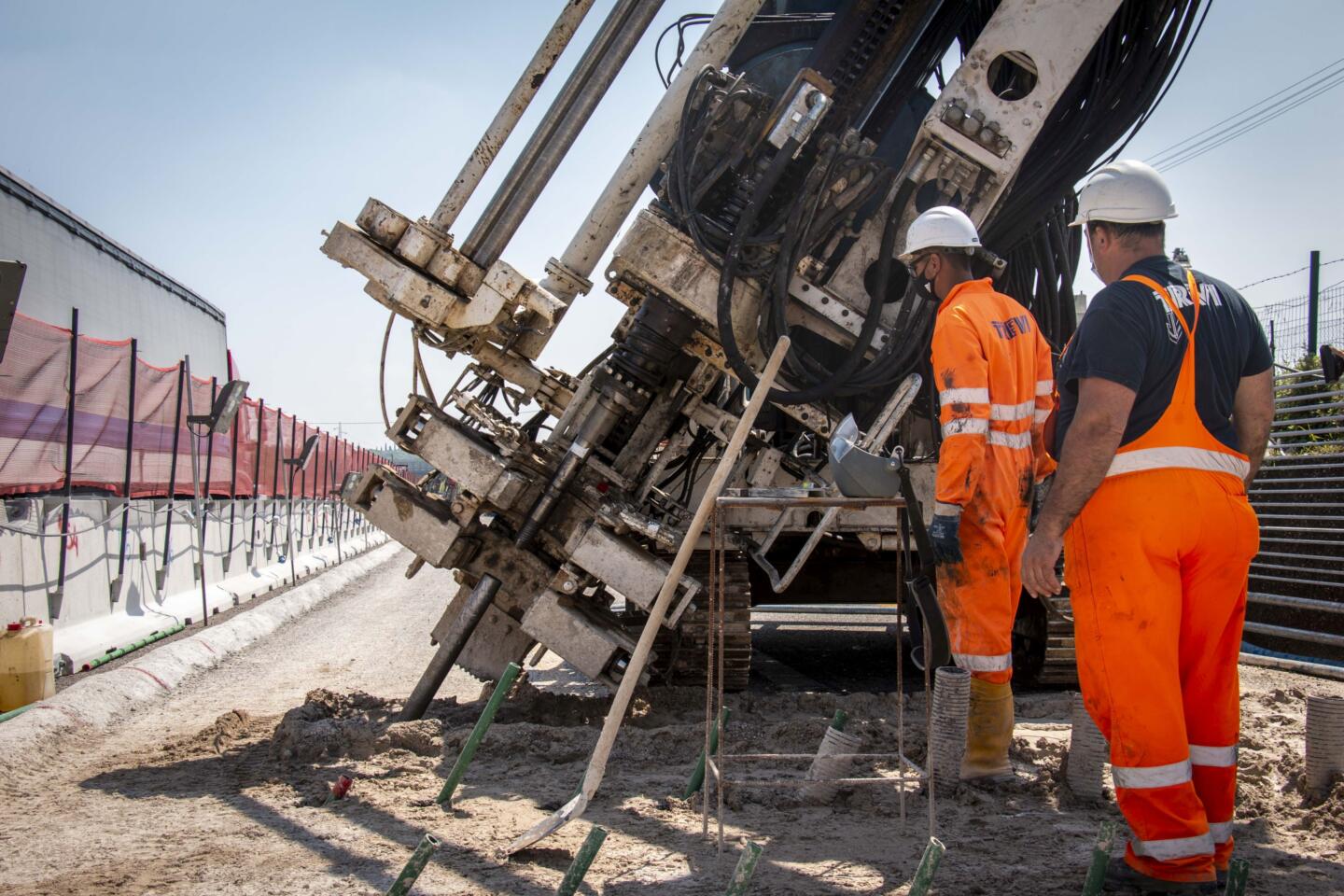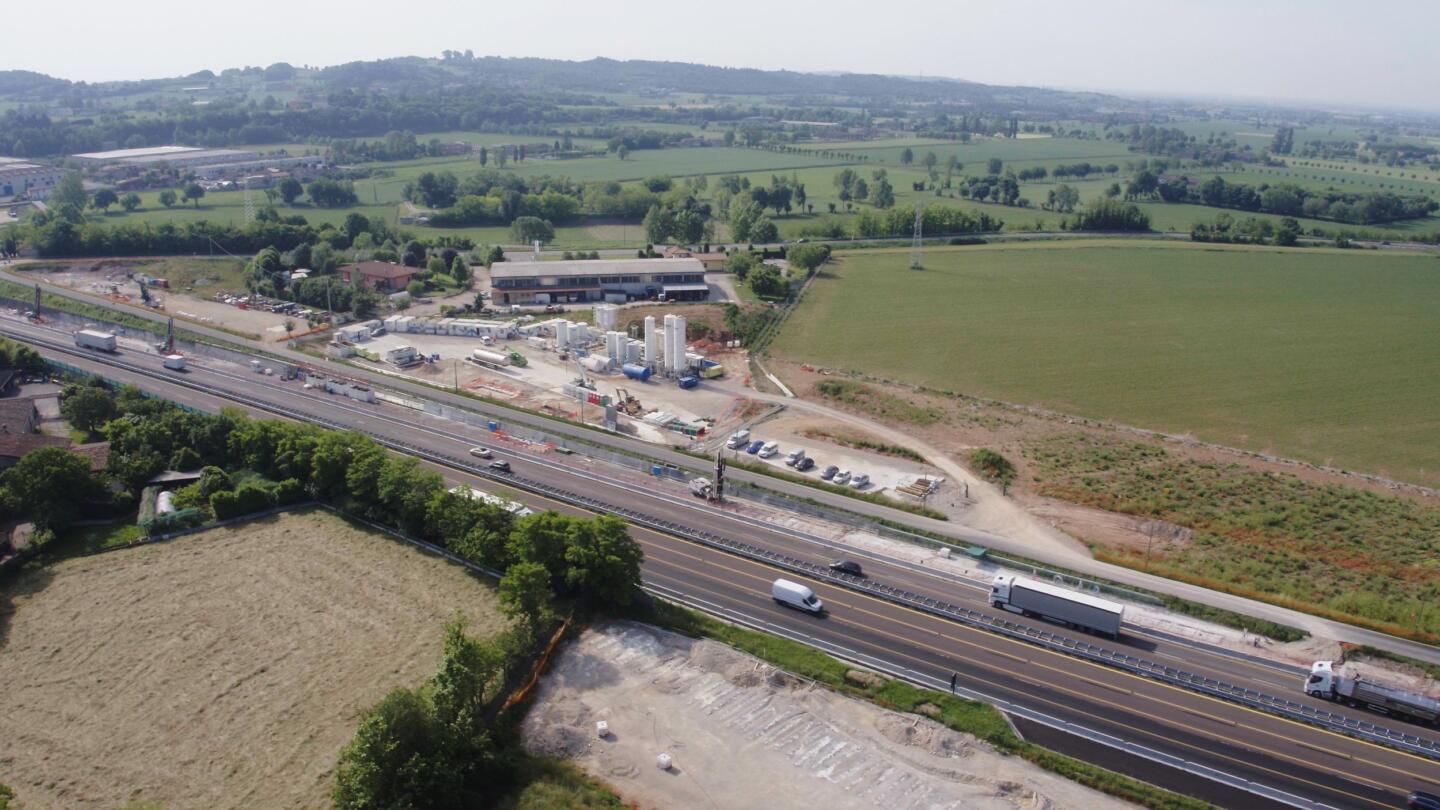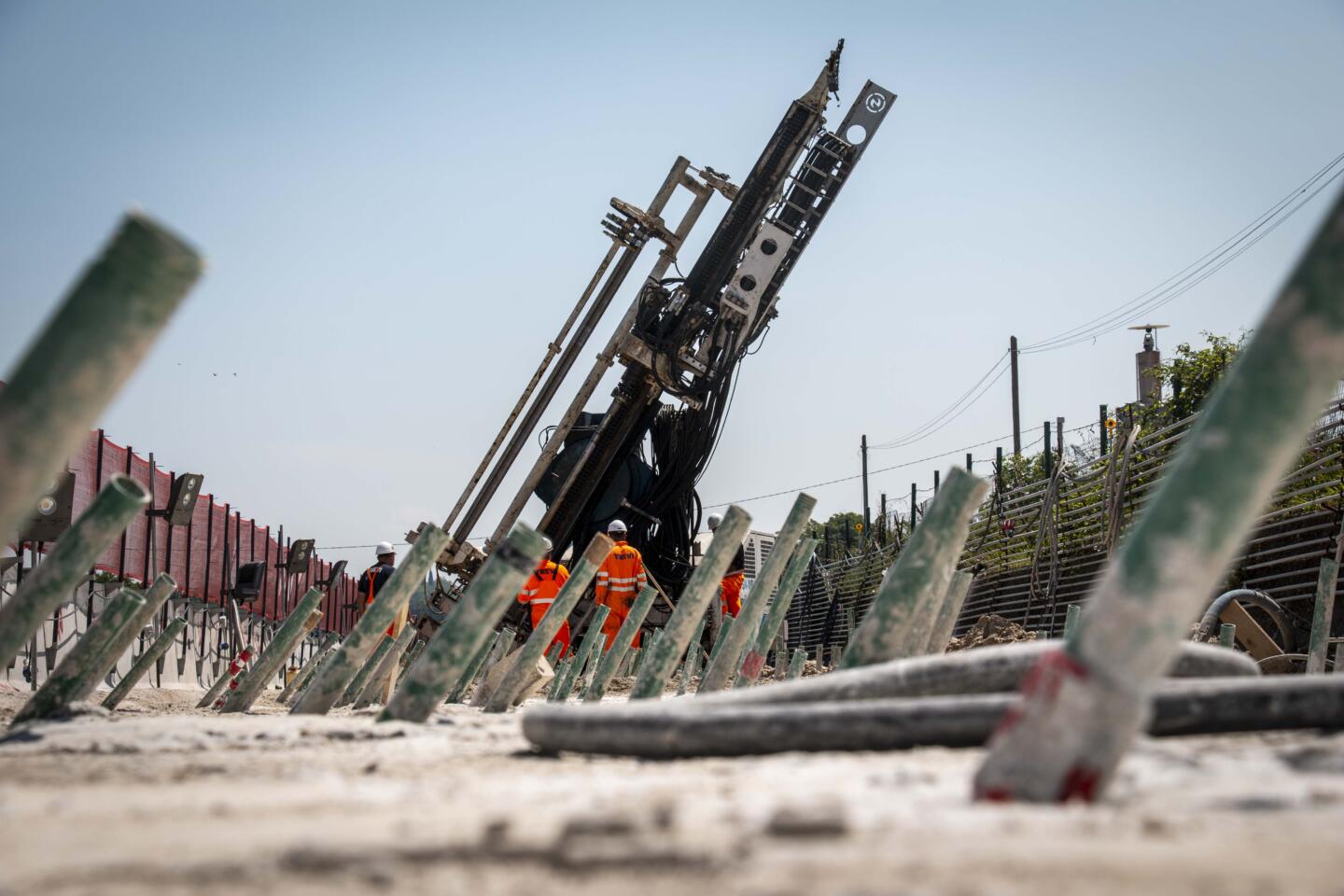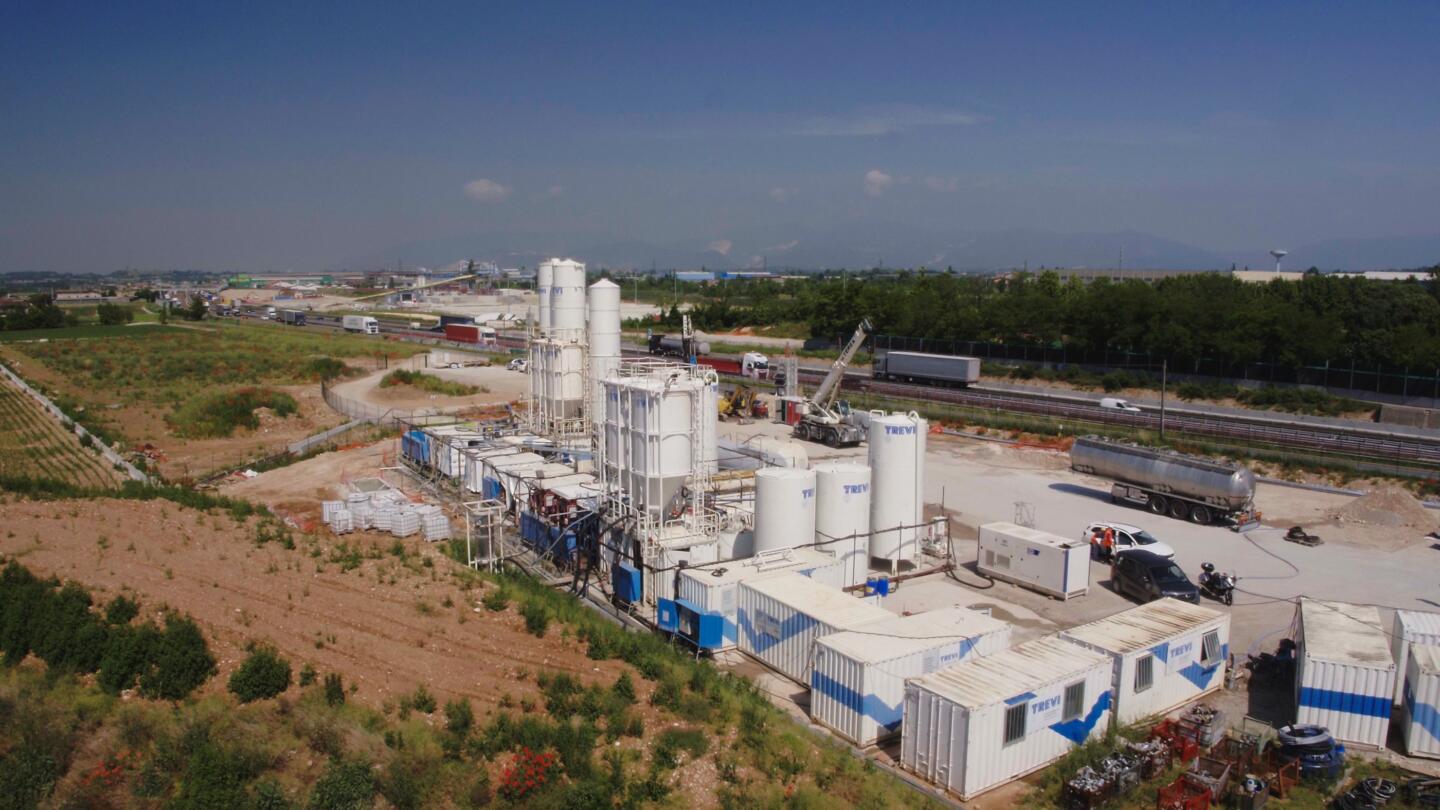The new Brescia-Verona High-Speed/High-Capacity railway line is a key project of the Milan-Verona railway link. It is part of the Turin-Trieste line which, in turn, is part of the wider system connecting Spain to the Ukrainian border.

The project, whose implementation has been entrusted to the Cepav due consortium, has been commissioned by Rete Ferroviaria Italiana, while the High Supervision and Construction Works Supervision have been entrusted to Italferr. The most complex and articulated project of the entire work is undoubtedly the Lonato Tunnel, entrusted to Seli over. It will be about 7 km long and will pass under the A4 freeway.
The demanding consolidation and foundation works have been entrusted to Trevi Spa. The small amount of overburden, in particular along the undercrossing of the A4 freeway and the buildings, imposed the decision to carry out consolidation prior to mechanized excavation, in order to minimize subsidence phenomena.

When the work is completed, especially from the inside of A4, 40,000 linear meters of drilling and grouting will be carried out, using about 5 million litres of mixture.
As of today, the Trevi spa is completing the intervention phase on A4, and the first results of the post-treatment tests show a clear improvement in the mechanical characteristics of the consolidated soils.
Obviously, the continuation of the interventions will be subject to further post-treatment tests, which will be useful in order to evaluate the effectiveness of the grouting treatments.
More about the works
The aim of Trevi’s work was to consolidate the ground around the new Lonato tunnel, where it passes under sensitive structures, to allow the TBM to pass through safely, minimizing any subsidence.
The initial design called for the sections to be consolidated to be treated with complex drilling geometries, using remote-controlled directional drilling procedures.
The characteristics of the soil, which was not suited to be permeated by the mixtures initially envisaged in the project, and the complex geometry of the perforations, led to the search for new design solutions.
Thanks to tests carried out in test fields set up on-site, it was possible to remodel the design mesh and develop more performing mixtures suitable for the soil to be treated.
From the test fields useful information emerged to allow important optimizations to be made:
– The adoption of a combination of low cement and silica-based chemical mixtures. The low cement content led to an improvement in rheological characteristics and a consequent greater capacity for soil permeation. The silicate mixtures made it possible to improve the consolidation effect and to permeate even the finest grain size soils.
– Adaptation of the design mesh, with an increase in the number of valves per linear meter, to bring about a more uniform and efficient distribution of the mixture
– A simpler geometry of the interventions, carried out almost exclusively with sub-vertical drilling, mainly from the ground level above the tunnel.

The innovative approach
In order for this new approach to be applied, Autostrade S.p.A. was asked to fully occupy the emergency lane and the first slow lane, for a strip of about 7 m, in both directions. The occupation of the two lanes always took place without interruption of motorway traffic. From this position, sub-vertical drilling was possible, carried out entirely from the surfaces above the tunnel.
This work made it possible to optimize the consolidation work, making it more effective, and above all to significantly reduce the construction time.
For the completion of the A4 motorway underpass, 40,000 linear meters of drilling were carried out, and approximately 5 million liters of the mix were injected. The results of the post-treatment tests showed a clear improvement in the mechanical characteristics of the consolidated soils.
Other interventions, for the consolidation under buildings and structures, are being completed, using the same methodologies adopted in A4. Obviously, these too will be subjected to further testing to assess the effectiveness of the injection treatments implemented.

Source: Trevi


![[Job Story] Ten Liebherr Excavators at Work on West African Railway Project](https://www.heavyquipmag.com/wp-content/uploads/2024/11/liebherr-mota-engil-3-1-218x150.jpg)


![[Job Story] Eight Potain Cranes at Work to Build Milan’s New CityWave Building](https://www.heavyquipmag.com/wp-content/uploads/2024/10/Potain-cranes-CityWave-2-218x150.jpg)
![[Job Story] UK-Based Equipment Hirer Upgrades Fleet With Three New JCB Electric Forklifts](https://www.heavyquipmag.com/wp-content/uploads/2024/10/JCB_35-22E_Teletruk_1-218x150.jpeg)


![[Job Story] The Customized Hitachi Saga Continues: a Look at Johnny Tveit’s Last Excavator Designs](https://www.heavyquipmag.com/wp-content/uploads/2024/09/Screenshot-2024-09-30-alle-14.17.26-copia-218x150.jpg)

 Copyright 2017-2023 All rights reserved.
Copyright 2017-2023 All rights reserved.